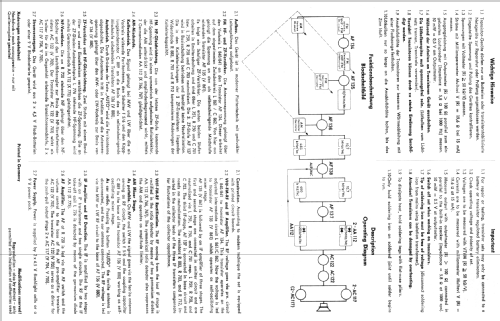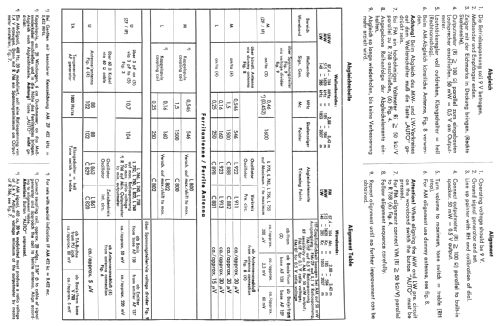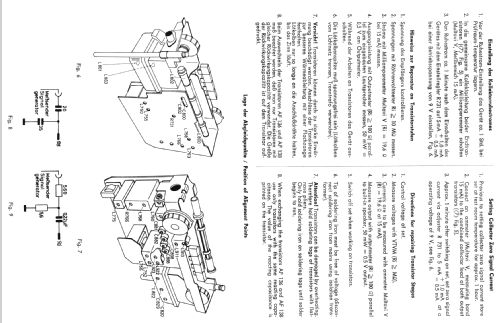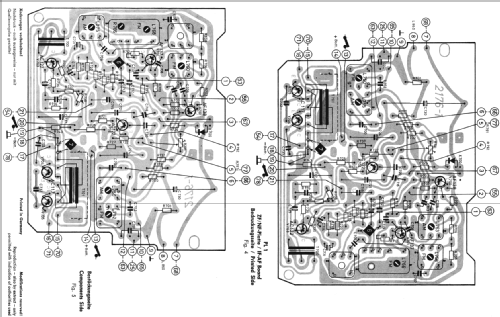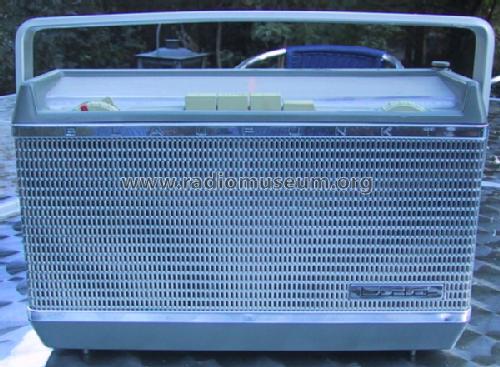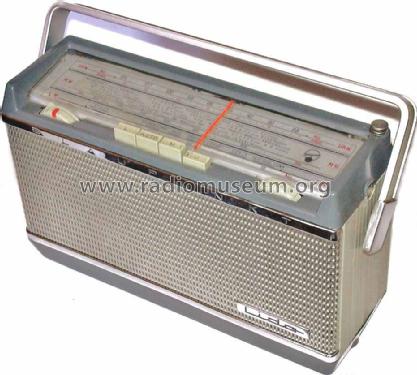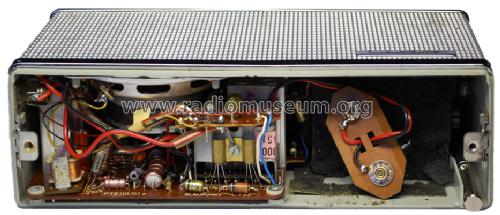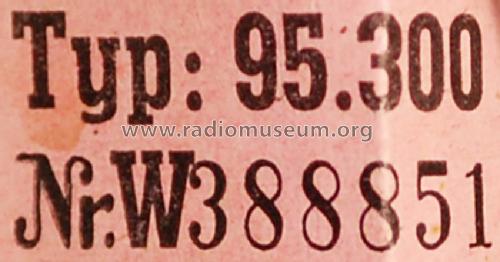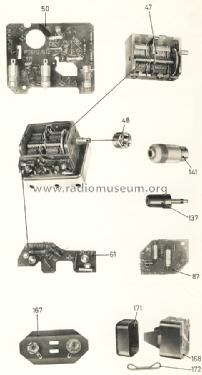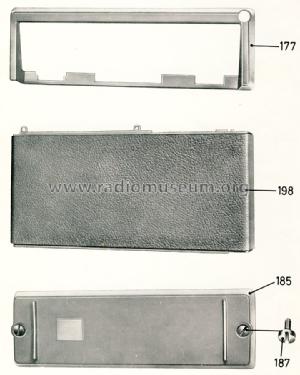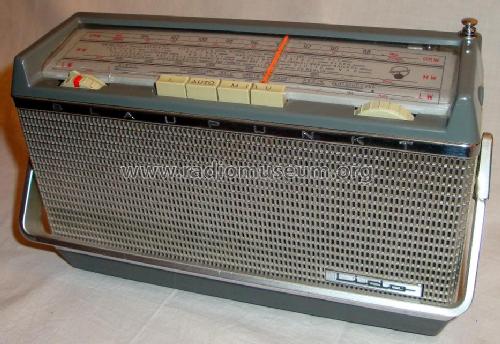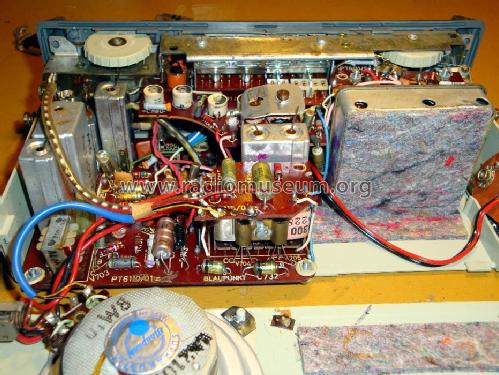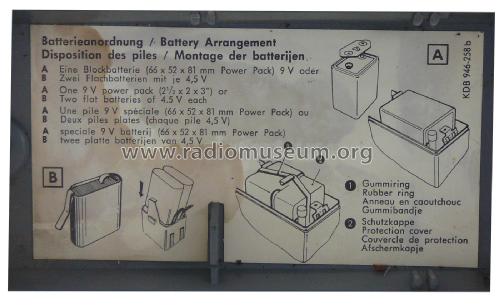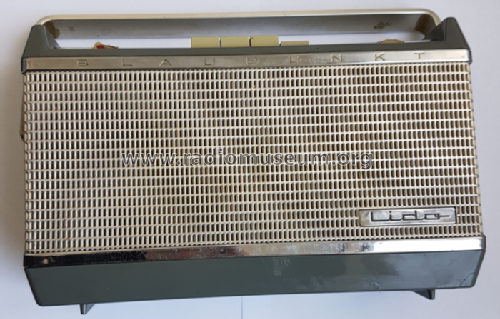Lido 95.300 ab W 380001
Blaupunkt (Ideal), Berlin, später Hildesheim
- Paese
- Germania
- Produttore / Marca
- Blaupunkt (Ideal), Berlin, später Hildesheim
- Anno
- 1965/1966
- Categoria
- Radio (o sintonizzatore del dopoguerra WW2)
- Radiomuseum.org ID
- 847
-
- alternative name: Ideal-Radiotelephon- und App-fabr. || Ideal-Werke AG; Berlin (ab 1934)
- Brand: Rotstern
Clicca sulla miniatura dello schema per richiederlo come documento gratuito.
- Numero di transistor
- 9
- Principio generale
- Supereterodina (in generale); ZF/IF 460/10700 kHz
- N. di circuiti accordati
- 6 Circuiti Mod. Amp. (AM) 10 Circuiti Mod. Freq. (FM)
- Gamme d'onda
- Onde medie (OM), lunghe (OL) e MF (FM).
- Tensioni di funzionamento
- Batterie a secco / 2 × 4,5 or 1 × 9 Volt
- Altoparlante
- AP magnetodinamico (magnete permanente e bobina mobile) / Ø 8.5 cm = 3.3 inch
- Potenza d'uscita
- 1 W (qualità ignota)
- Materiali
- Plastica (non bachelite o catalina)
- Radiomuseum.org
- Modello: Lido 95.300 [ab W 380001] - Blaupunkt Ideal, Berlin,
- Forma
- Apparecchio portatile > 20 cm (senza la necessità di una rete)
- Dimensioni (LxAxP)
- 240 x 152 x 78 mm / 9.4 x 6 x 3.1 inch
- Annotazioni
- Netzbetrieb mit zusätzlichem Netzteil möglich.
Im VDRG-Handbuch 1965/66 ohne den Zusatz "W" geführt.
- Peso netto
- 1.8 kg / 3 lb 15.4 oz (3.965 lb)
- Fonte dei dati
- Handbuch VDRG 1965/1966 / Radiokatalog Band 1, Ernst Erb
- Bibliografia
- -- Original-techn. papers. (Service-Manual, Serie W)
- Altri modelli
-
In questo link sono elencati 3593 modelli, di cui 3282 con immagini e 2332 con schemi.
Elenco delle radio e altri apparecchi della Blaupunkt (Ideal), Berlin, später Hildesheim
Collezioni
Il modello Lido fa parte delle collezioni dei seguenti membri.
Discussioni nel forum su questo modello: Blaupunkt Ideal,: Lido 95.300
Argomenti: 1 | Articoli: 1
Die Darstellung des Skalenseil - Verlaufes ist ungenau.
Zwischen dem Abstimmrädchen und der auf der Achse des Drehkondensators montierten Zink - Trommel läuft das Skalenseil nicht nur über ein einziges Plastikröllchen, sondern zusätzlich noch über ein weiteres, das am Ende eines beweglichen Hebels befestigt ist. Dieser soll wohl dazu dienen, die Spannung des Skalenseils mittels einer Feder auszugleichen.
Siehe das hochgeladene Detailbild.
Allegati
- Detail des Skalenverlaufes (247 KB)
Ottmar Lauth, 19.Jul.15



